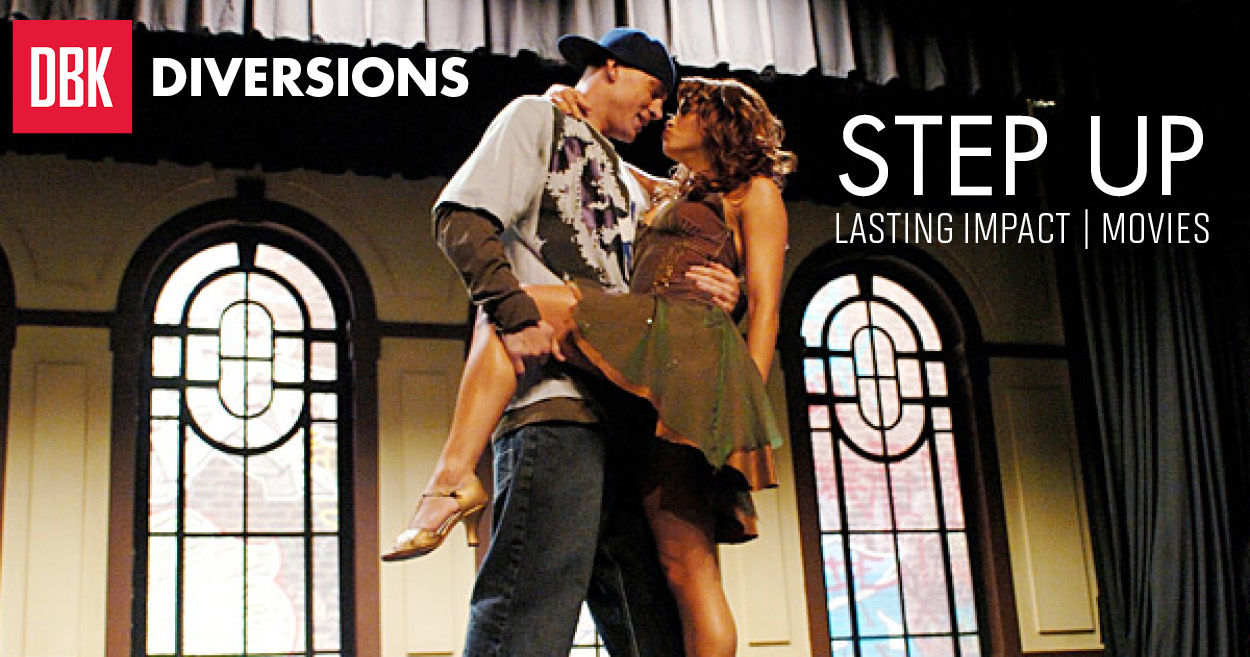
Step Up
Every once in a while, there comes a film franchise that changes the cinematic game as we know it. The Step Up series is not one of those franchises.
You read that right, friends. I’m not here to tell you that, since 2006, the Step Up flicks have filled critics with awe and delight each time they’ve graced the silver screen. That’s simply not true. Sad as it might be, Channing Tatum won’t be gyrating up to the Academy Award stage to accept some long-overdue recognition anytime soon. Rotten Tomatoes — which has consistently given the films abysmal ratings — isn’t going to experience a change of heart.
A movie, however, need not attain critical acclaim to retain significance.
In Step Up: All In, the series’ fifth film, prominent cast members from previous installments come together and battle for bragging rights and a three-year Las Vegas contract. On the eve of All In’s premiere, one might ask what about the series’ seemingly trite premise warrants not one or two, but five films?
There are two answers. One has everything to do with dance; the other nothing at all.
Subcultures are neat. Almost everything short of life-sustaining necessities such as food and water requires some sort of following to thrive. Think about it. Without a dedicated following, where would professional sports be? Garage rock? Raw food restaurants with vague names? Where there is a thing there is a following. And where there is a following, there is a culture that perpetuates the existence of aforementioned thing. Dance is no stranger to this phenomenon.
As a tenured member of the dance community and observer of all things dance, I am keenly aware of the underestimated and often completely unrecognized power of dance subculture. And Step Up is to the dance subculture as Sunday is to football fans.
The movies’ premieres are the Super Bowl of dance and require just as much event planning. And like the Super Bowl’s audience, dancers do more than simply watch. We obsess over the spectacular choreography, we buy the soundtracks and, most importantly, we try to emulate what we see on-screen in the studio.
I personally have danced to no fewer than four songs straight off the Step Up soundtracks. Each time one is released, it sends waves of excitement — and choreography — through studios across the country.
On a college budget, it’s hard to catch a show by a touring dance company. It’s even harder to sign up for expert-taught conventions that charge $200 a day, excluding hotel rooms and dining. The inspiration provided by the Step Up series, however, is easy and accessible.
Beyond the favors it does for young dancers, Step Up has one more redeeming quality that licenses at least 10 more movies: Robert Alexander III, better known as Moose. Adam G. Sevani, who plays Moose, is a shining star in the vapid darkness that constitutes the acting in most of the Step Up films. He’s the nerdy best friend that everyone wants — OK, the nerdy best friend that I want — and a bit of a breather from movies that are stereotypical in every other way. Who really ever heard of a dance and electrical engineering double major before Step Up 3D? If Moose represents anything, it’s that goofy kids with outrageous hair can be kind of cool too. But mainly it’s his unexpected dance moves and exuberant personality that are too good to resist.
I’ll never tell you that the Step Up films are this generation’s Dirty Dancing. That’s too pathetic a comparison to even fantasize about. That being said, I’d trade Swayze for Moose any day of the week.



